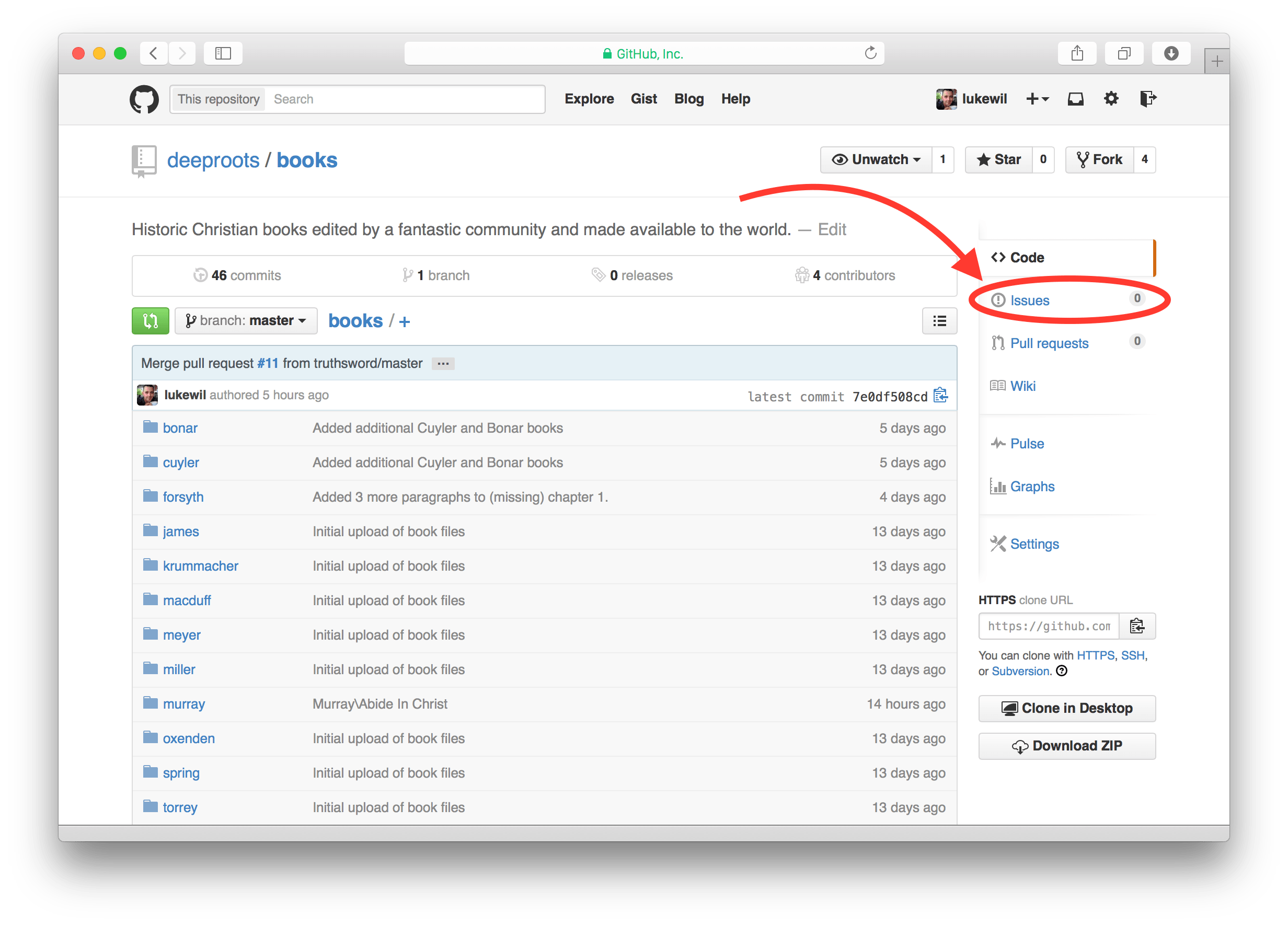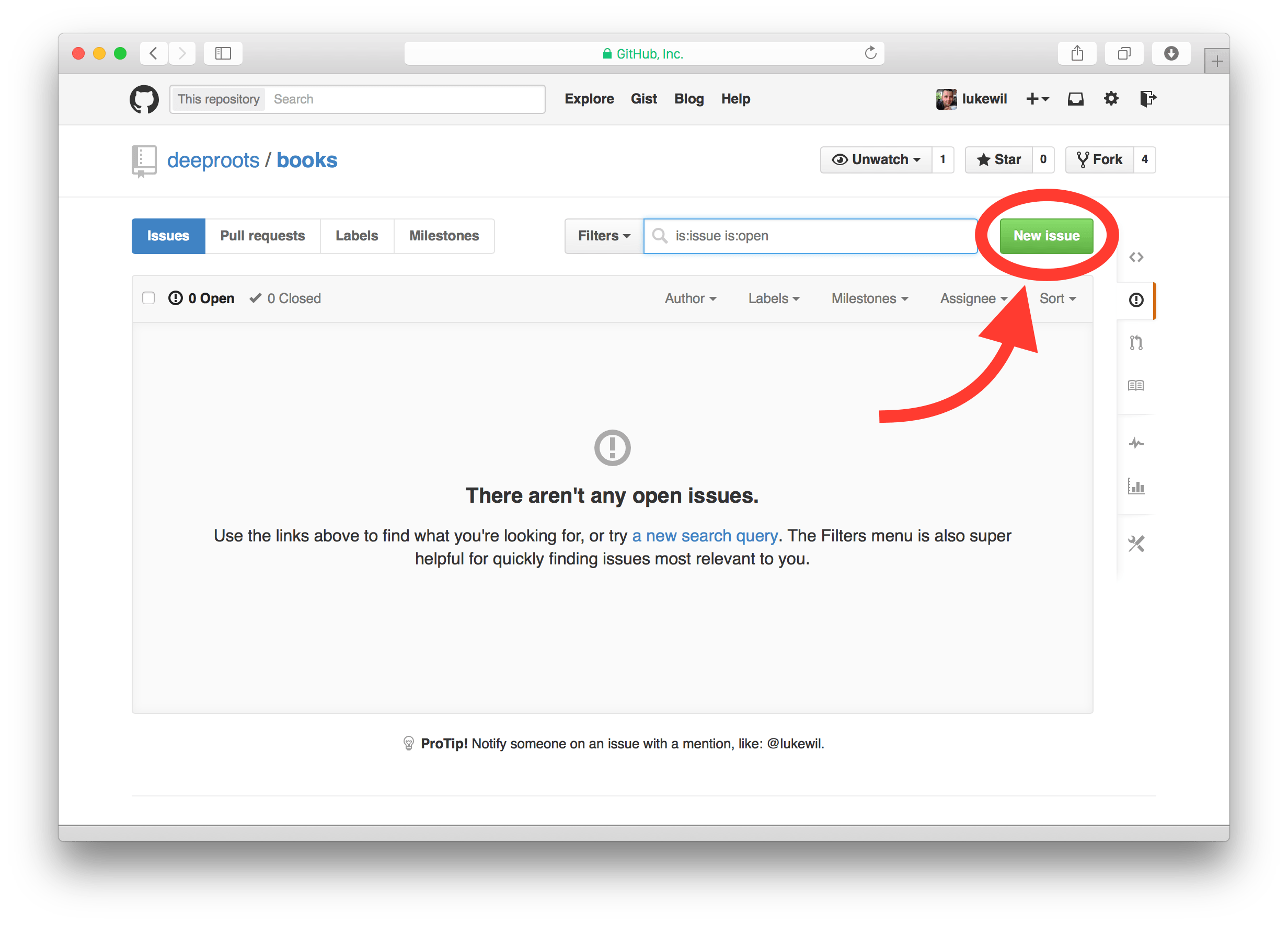Issues on Github
One of the great things about using Github for our editing process is that we have a place to deal with any issues that might come up. And that place is… wait for it… issues!
You can find Github’s own guide to issues here, but here’s how they describe them:
Issues are a great way to keep track of tasks, enhancements, and bugs for your projects. They’re kind of like email—except they can be shared and discussed with the rest of your team.
So, if you have any kind of a question about what you should do, issues are the place to tackle that. It naturally tends to happen in comments on committs/pull requetss as well, but it’s not as useful because 6 months down the road that pull request will be buried, but someone might still be looking for the answer to a problem they’re having. And with issues we can link them back to one another, catogorize and color code them, and even assign the fixing of a problem to someone who knows how to fix it!
Opening an issue is pretty simple - just go to the Deep Roots/books repository on Github, and click the Issues tab on the right side, as seen below.

First, search to make sure that your issues hasn’t been dealt with already. If not, just click the green “New Issue” button on the right side of the page, and let the community know what’s on your mind!
